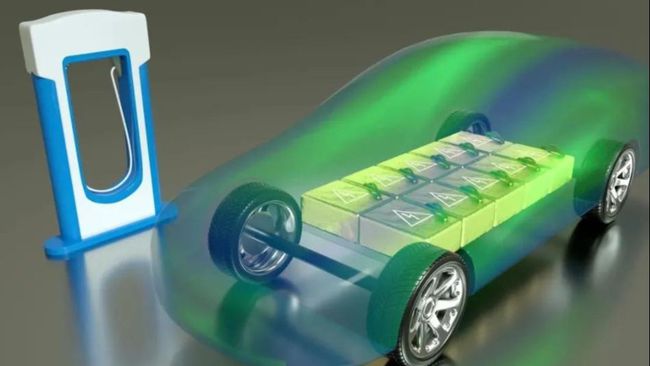As electric vehicles (EVs) continue to gain popularity, consumers are becoming increasingly interested in understanding the different types of EV batteries. Two of the most common battery options today are ternary lithium batteries and lithium iron phosphate (LFP) batteries. Each has its own unique set of advantages and disadvantages, making it important to understand which one might be the best fit for your needs.
This guide will break down the differences between these two battery types, comparing them in terms of materials, performance, safety, and cost. We’ll also offer recommendations based on your usage scenarios, budget, and performance requirements.

Lifepo4 Battery (LFP battery) use lithium iron phosphate as the cathode material. These batteries are well-known for their high safety, long cycle life, and affordability. The stable chemical structure of LFP battery minimizes risks like short circuits and fires during charging and discharging.
While the energy density of LFP battery is relatively low, they are highly durable, with the ability to handle more charge and discharge cycles than many other battery types. This makes them a popular choice in electric vehicles, energy storage systems, and other applications where longevity and safety are key.
Ternary lithium batteries, on the other hand, use lithium nickel cobalt manganese oxide (NCM) as their cathode material. They offer a high energy density, fast charging capabilities, and good performance in low temperatures, which makes them ideal for applications requiring longer driving ranges and quicker recharges.
However, the safety and stability of ternary lithium batteries aren’t as robust as LFP batteries. They are more susceptible to thermal runaway, which can lead to safety issues like fires or short circuits if not properly managed.
Let’s break down the main points of comparison between LFP battery and ternary lithium battery:
1. Materials
LFP Battery: Use lithium iron phosphate, which is more stable and safer.
Ternary Lithium Battery: Use lithium nickel cobalt manganese oxide, offering higher energy density but lower stability.
2. Battery Performance
LFP Battery: Lower energy density but highly durable, with more charge cycles.
Ternary Lithium Battery: Higher energy density, leading to a longer driving range and faster charging speeds.
3. Safety
LFP Battery: Extremely safe, with minimal risk of overheating or catching fire.
Ternary Lithium Battery: Higher risk of thermal runaway, requiring careful management to avoid safety issues.
4. Cost
LFP Batteriy: Generally more affordable, with simpler production processes.
Ternary Lithium Battery: More expensive due to the use of rare metals and a more complex manufacturing process.
Here’s a quick comparison table to summarize these differences:
| Comparison Item | Ternary Lithium Battery | LFP Battery |
|---|---|---|
| Energy Density | Higher, enabling longer driving range | Lower, but still sufficient for many use cases |
| Price | More expensive | More affordable |
| Cycle Life | Shorter (500-1,000 cycles) | Longer (2,000-3,000 cycles) |
| Safety | Less stable, higher fire risk | Very stable, low risk of fire |
| Cold Resistance | Performs better in cold weather | Less effective in cold conditions |
| Charging Speed | Faster charging times | Slower charging speeds |
| Environmental Impact | Higher due to rare metals | Lower, with more sustainable materials |
| Application | Suited for high-performance EVs | Ideal for standard city/commuter EVs |
High Safety: LFP battery have excellent thermal stability, making them less likely to overheat or catch fire.
Long Life: These lifepo4 batteries can handle many more charging cycles, often lasting significantly longer than other battery types.
Low Cost: Their simpler production process and use of cheaper materials make LFP battery a more budget-friendly option.
High Energy Density: If you need a battery that offers a longer driving range, ternary lithium batteries are a great choice.
Better Cold Resistance: They perform well in low temperatures, making them ideal for use in colder climates.
Faster Charging: These batteries can reach a higher state of charge in a shorter amount of time, making them more convenient for frequent use.
When choosing between LFP and ternary lithium batteries for your EV, consider the following factors:
Usage Scenarios: If you frequently travel long distances, a ternary lithium battery may be a better choice due to its longer range. For city driving, where safety and cost are more critical, LFP batteries are ideal.
Budget: LFP batteries are generally more affordable, making them a better option for those with budget constraints.
Performance Needs: If you prioritize fast acceleration and rapid charging, ternary lithium batteries will meet your needs better. For more moderate performance requirements, LFP batteries should suffice.
Both LFP battery and ternary lithium battery have their strengths and weaknesses. Your choice should depend on your specific needs:
Choose LFP battert if safety, long life, and affordability are your top priorities.
Choose ternary lithium if you require higher energy density, better cold performance, and faster charging.
Understanding these differences will help you make a more informed decision when selecting an EV battery that matches your driving habits, budget, and performance expectations.
Next:Searching for the Best Boat Battery? Key Factors to Consider
Previous:How to Choose the Right Battery Capacity for Off-Grid Living
Contact Person: Miss. Elsa Liu
| WhatsApp : | +8617763274209 |
|---|---|
| Skype : | +8617763274209 |
| WeChat : | 17763274209 |
| Email : | Elsa@lifepo4-battery.com |